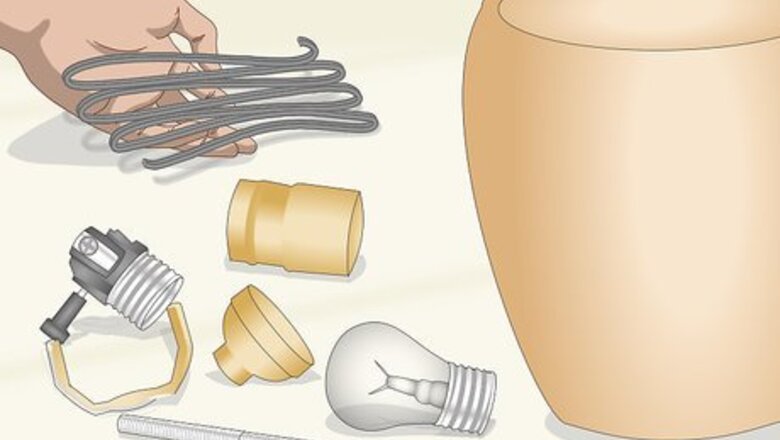
views
Building a Lamp from Scratch

Gather the necessary materials for your lamp. Head to your local hardware store or visit an online supplier. Either purchase a DIY lamp socket kit or purchase the following: a zinc-plated nipple about 8 inches (20 cm) long, light bulb, lamp cord, lamp base, plug, lampshade, socket, socket cap, harp, knurl washer, and a rubber washer. Each lamp cord is made of 2 wires stuck together: one with smooth insulation and one with ribbed insulation. Take note of each one for later on. If you purchase a flat cord, use a clamp-style wire plug. For round wires, use a two-pronged wire plug. Swap a metal lamp base for a pretty piece of wood if you want a smaller table lamp.
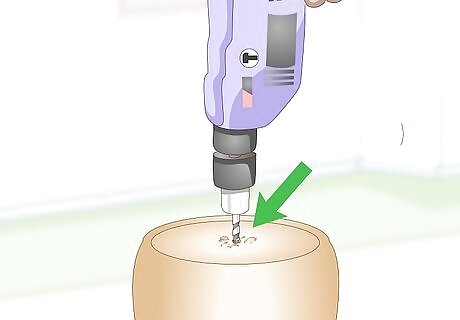
Drill a vertical hole through your lamp base. Attach a ⁄8 inch (0.95 cm) bit to an electric drill. In terms of length, make sure the bit is at least half the length of the base material. Now, drill a vertical hole through both sides of the base to meet in the middle. Afterward, you should have a hole straight through your material for the lamp wire. Hold the base steady with one hand as you drill the hole.
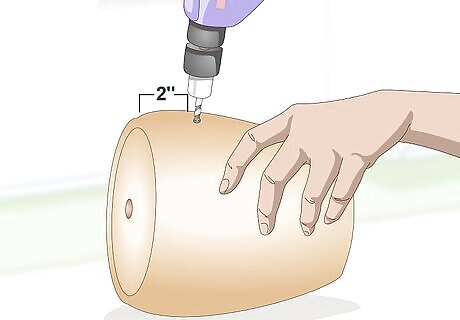
Create a cord escape within 2 inches (5.1 cm) from the bottom of the lamp base. The cord escape will run the lamp cord from the base and connect to a plug. Attach a ⁄8 inch (0.95 cm) bit to an electric drill. Make sure the length is at least the radius of your lamp base. Hold the base steady with one hand and drill the hole horizontally through the base so that it meets the vertical center hole. Place your lamp base on a flat surface before drilling the cord escape. To help guide your drill, draw a line with a straight edge on top of your lamp base extending from the center hole to its edge.
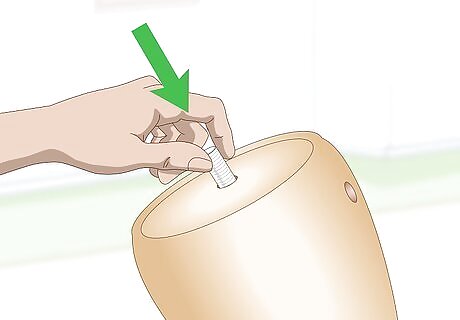
Connect the nipple to the lamp base. Whether your base is wooden or metal, it needs a nipple on top to connect to the socket. Hold the threaded nipple vertically in front of you. Thread the knurl washer (the one with ridges) onto the nipple followed by the rubber washer. Attach the nipple into the center channel of your lamp base and make sure the knurl washer is closest to the base. Keep about ⁄4 inch (0.64 cm) between the top of the nipple and the washers. Purchase a DIY lamp socket kit from online suppliers or purchase each part separately. If you buy your own nipple from a hardware store, select one that's zinc-plated and about 8 inches (20 cm) long.

Connect your socket locknut to the nipple. Thread the locknut that comes with your socket base down the length of the nipple extending from the base. Make sure it rests securely against the base with the rubber washer between it. There should be about ⁄4 inch (0.64 cm) of the nipple extending from the lamp base to connect to the locknut. If there isn't, adjust the washers.
Disassembling an Old Lamp
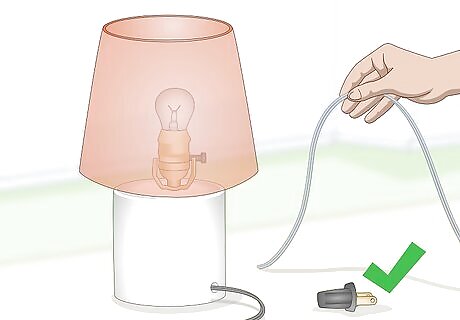
Purchase a plug suitable for your lamp's wiring. Take a look at your plug's cord: is it flat? If so you need to buy a clamp-style wire plug. But if it's round, you need to purchase a two-pronged wire plug. Head to your local hardware store and check out your options! Ask employees at local hardware stores for suggestions based on your lamp. Provide them with a picture if possible.
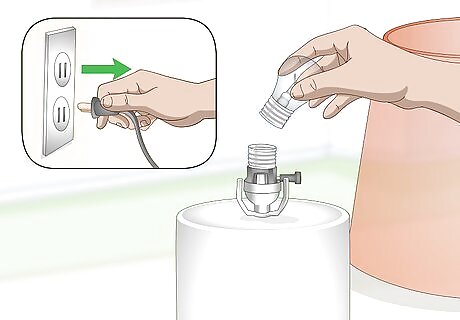
Unplug the lamp and disassemble it. Start by disconnecting your lamp from its power source. Now, remove the lampshade from the harp, which is the metal piece that surrounds the bulb and connects to the lampshade. Afterward, remove the harp and unscrew the light bulb from the socket base and remove it. Squeeze the 2 arms of the harp together to remove it from its brackets. Don't remove the socket cap, which is what the socket connects to.
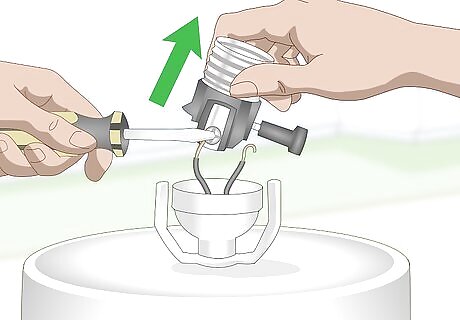
Unscrew the old socket and unhook its wires. Look closely at the old socket—where the lamp's power switch extends—and locate the word "Press". Use your thumb or forefinger to press firmly on this area while wiggling the socket apart. Loosen the screws where the wires are attached and unhook the wires from the socket. Remove the insulating covers on your socket if it has any. Never attempt this with the lamp connected to a power source.

Remove the socket cap from the lamp's body. The socket base contains a center hole with knotted wires extending from it. Untie the knotted wires and then pull the socket base upward so that the wires slide through the center hole. Hold the base of the lamp for support as you pull the socket cap off.
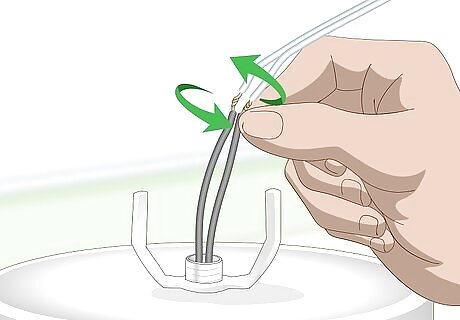
Twist the ends of the old wires to the ends of the new wires. After twisting them together, take a piece of electrical tape and wrap it around them to secure them. Don't apply too much tape—the wires need to fit through the hole running down the center pipe that leads to the base of the lamp. After wrapping electrical tape around the wires, snip off the excess piece with scissors.

Pull the old cord through the base of the lamp to feed the new cord through. Pull on the old cord from the bottom of the lamp until the new cord appears. Now, pull on the old cord from the edge of the lamp base to bring the new cord through the channel. Leave about 6 inches (15 cm) of new cord exposed at the top of the lamp. Discard the old cord once the new cord runs from the top of the lamp to outside of the lamp's base. If your lamp's base is covered in felt, carefully cut around its perimeter with a paring knife and peel it off.
Connecting the Wiring for New and Old Lamps
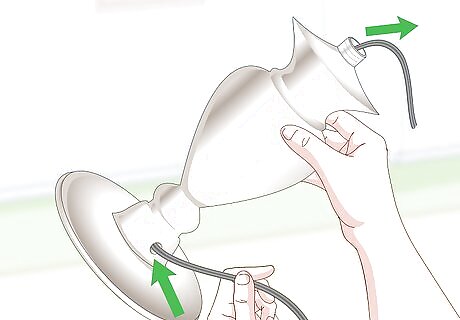
Run your cord through the base of the lamp and out through the nipple. Thread your cord into the hole at the base up through the center channel. Continue feeding it until it's through the nipple extending from the lamp body. If the cord ever gets stuck, pull it back 2 to 3 inches (5.1 to 7.6 cm) and then continue feeding it through.
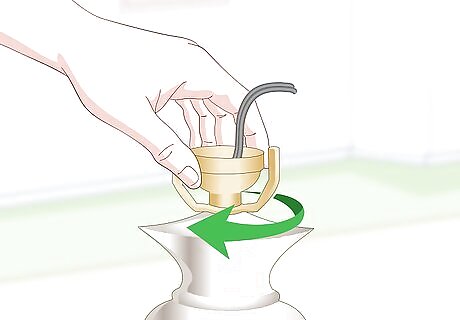
Thread the cord through the socket cap and secure it. Once the cord extends from lamp's channel through the nipple, place the center hole of the socket cap over it. Bring the it down to the nipple extending from the lamp base and turn it clockwise until it's secure. In some models, you'll have to place a locknut onto the nipple before attaching the socket cap.
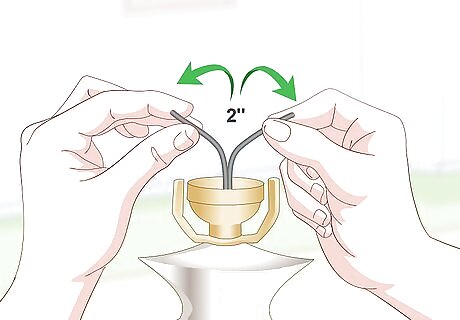
Separate the top 2 inches (5.1 cm) of the lamp cord. Your cord is made of 2 wires connected together: one that is ribbed (neutral) and another that is smooth (hot). Pull them apart with your hands or—if they're tightly connected—use a pair of scissors to cut along the middle indent that separates them. Take note of each wire and make sure you can distinguish them before proceeding to the next step. The hot wire should be continuous to the center terminal of the bulb socket. Using a multimeter set to resistance or continuity can help determine which wire goes where.
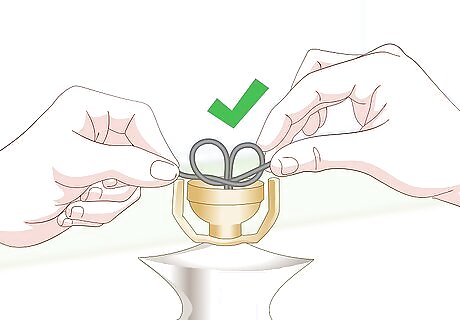
Tie an underwriter's knot into the 2 wires. Start by making a 1 inch (2.5 cm) loop with each wire that points upward. Hold them together with your thumb, forefinger, and middle finger. Now, take the free ends of each wire and feed them through the loop of the opposite wire. Afterward, pull the ends outward to tighten the knot. After tying the knot, pull the wire from the base of the lamp so that the knot lowers into the socket cap and there's no slack in the line. Cut the wires 2 inches (5.1 cm) from the knot when you're done.

Strip ⁄2 inch (1.3 cm) of wiring insulation from the ends. Insert each end of wiring between your wire strippers. Grip the handle at the ⁄2 inch (1.3 cm) mark and pull upward to remove the insulation. Hold the wire insulation firmly with one hand as you pull the wire stripper upward.

Wrap the ribbed wire around the silver screw. Locate the silver screw on the side of the socket. Loosen it with a screwdriver by turning it counterclockwise. Once there is enough space, wrap the ribbed wire clockwise around it. After it's firmly wrapped around the screw, retighten the screw. Double-check that you haven't accidentally wrapped the wrong wire. Make sure that none of the insulation is underneath the screw.
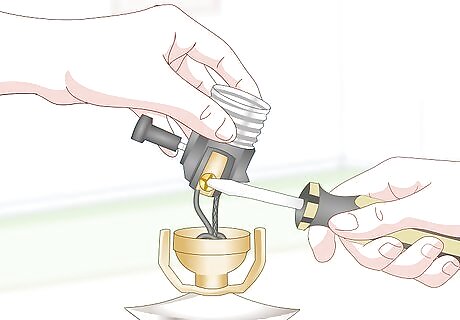
Wrap the smooth wire around the brass screw. Just as you did with the silver screw, locate the brass screw on the side of the socket. Loosen it until there's a space between its tip and the socket. Now, wrap the wiring clockwise around it and retighten the screw. Double-check that none of the insulation is underneath the screw.
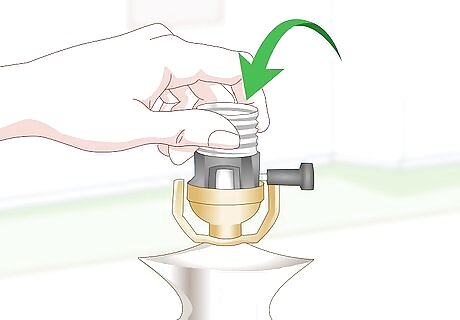
Reattach the socket to the socket cap. Slide the insulator tube that acts as the outer covering of the socket over the inner part of the socket. Be sure that it slides over the lamp switch. Now, press the socket down into the socket cap—this may take a bit of effort. Listen for a click as you push the socket into the cap—once you hear it, it's firmly in place.
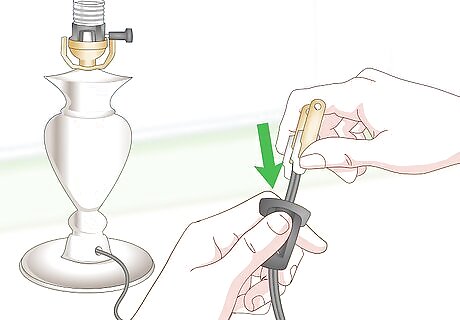
Attach the plug to your lamp's wire. Make a clean cut at the end of your lamp's base wire using needlenose pliers. Remove the plug from its case and feed the wire through the hole in the base of the plug. Spread the prongs apart and feed the wire into the slot until it hits the end. Squeeze the prongs together until you feel the wire being pierced by the prongs. Now, push the plug into the case. Swap out needlenose pliers with wire cutters if you'd like.

Assemble the lamp and connect it to a power source. First, replace the harp, which is the metal piece that connects to the lampshade and surrounds the bulb. Press its prongs together and attach it to the brackets of the socket base. Now, screw the lightbulb clockwise back into the socket and lay the lampshade over the harp. You can now connect your plug into a power source and turn it on. If your lamp doesn't work, double-check the wiring in the socket and plug and try again. Always remember to remove your lamp from a power source prior to doing this.











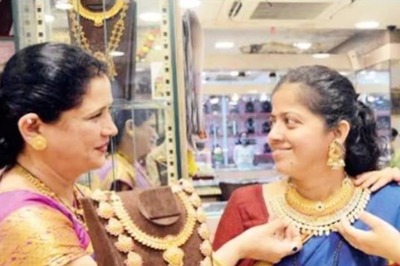


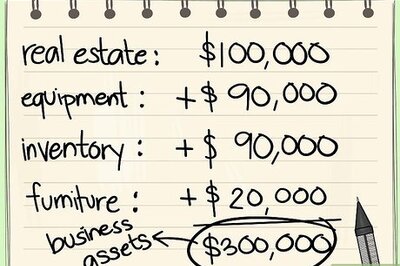




Comments
0 comment